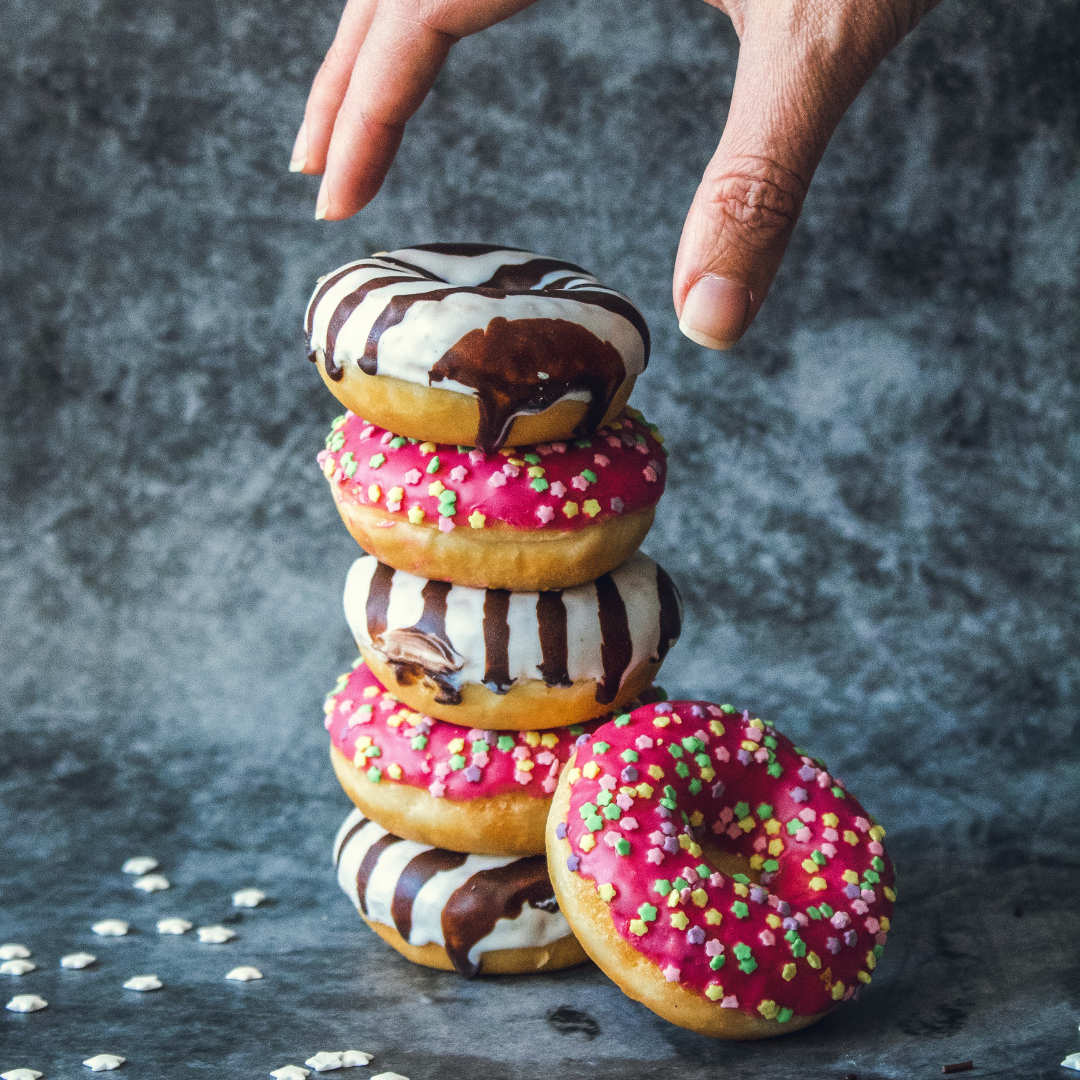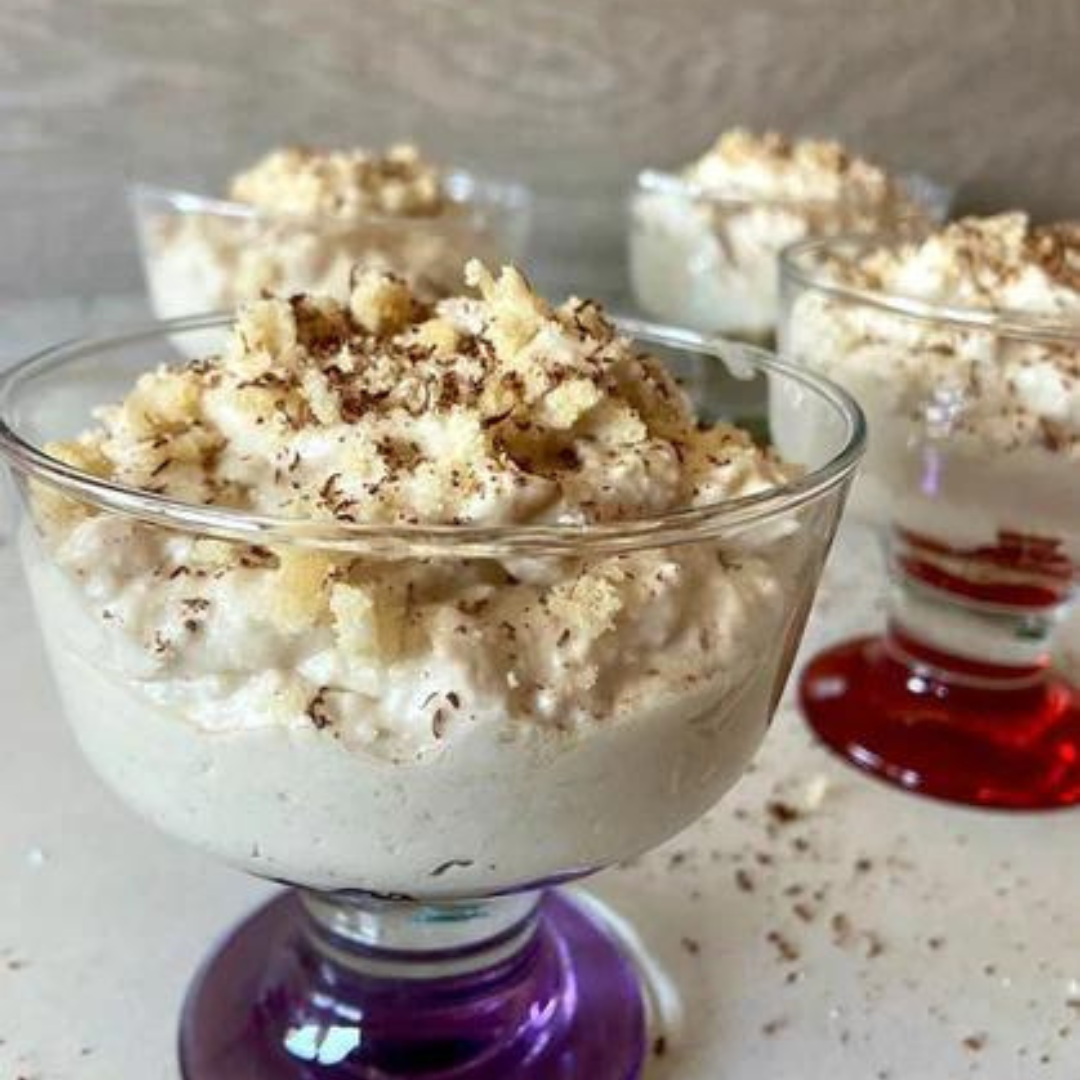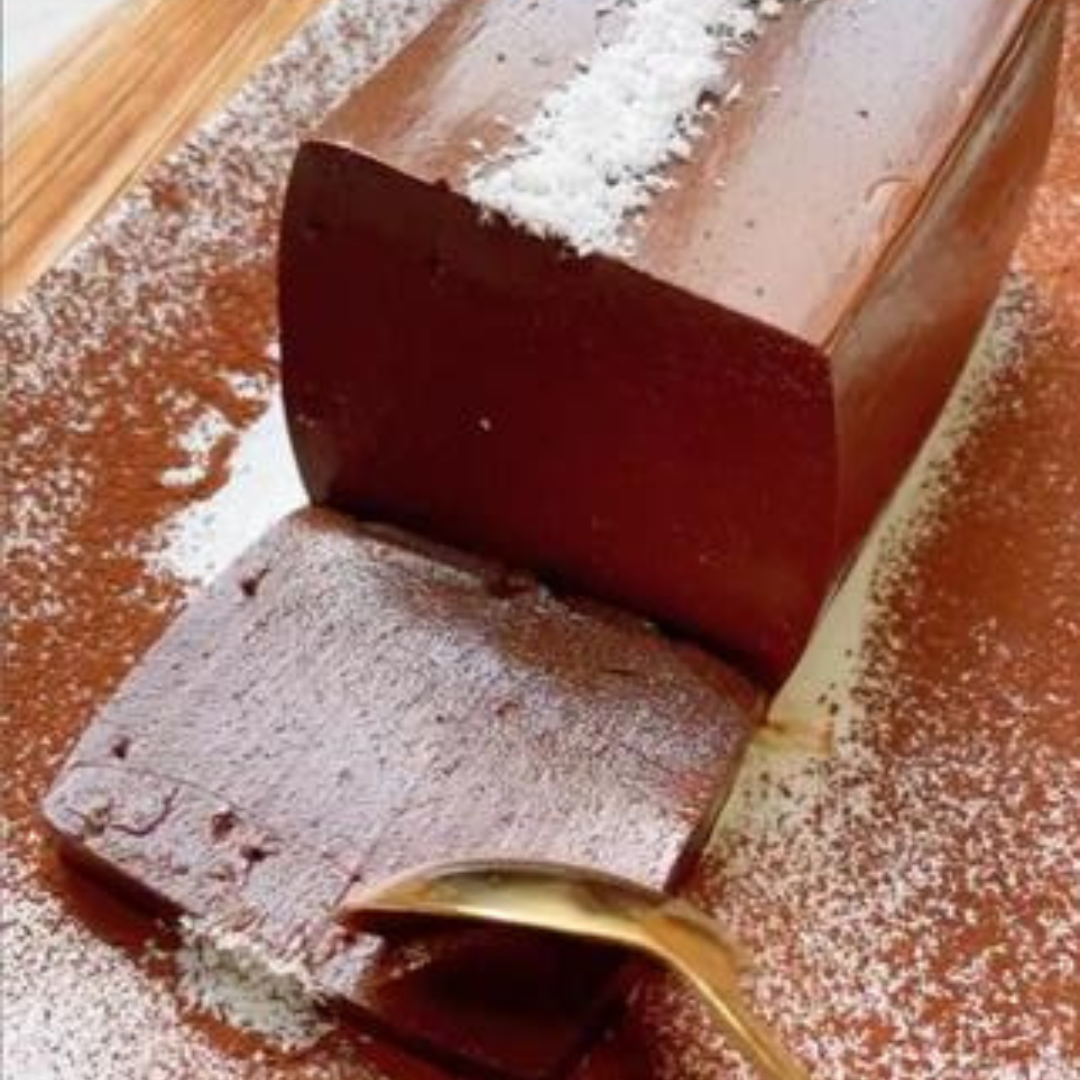Craving carbs or sugary treats on your keto diet?
You're not alone. A lot of people struggle with cravings when on keto. Even now, after a couple of years, there are still days where we make eye contact with that piece of cake, and it's just so hard to resist. But these urges got much less.
And to be clear: to crave a regular cake now and then is absolutely fine. If you can eat sugar (you have no pre-conditions affected by it), eat the cake. However, cravings can get out of control, and you'll feel them not once in a while but very often.
This can be frustrating - especially if you give in to the cravings every time, and this is something that is making your diet unsustainable.
But don't worry, when there's a will, there's a way.
One of the main advantages of a Keto diet is that you feel satiated most of the time. This happens because you eat a lot of healthy fats.
But sometimes, just eating your healthy fats does not seem to be enough. You could be making a few mistakes that are boycotting your keto goals.
Maybe you're not eating enough protein, or you are not replenishing crucial minerals. If you're a woman, your period could also be tricking you.
Let’s talk about what might be hindering your success and what to do to give your body what it really needs.
Why beginner cravings happen
As we said, it's totally normal to crave high-carb foods when you're starting a Keto Diet. You're teaching your body to burn fat instead of glucose, and that can be difficult for it to adapt in the first weeks.
But there are also a few other common reasons that might be triggering these crazy cravings:
- You might not be eating enough fats or protein
- Artificial sweeteners like aspartame
- The 'Keto Flu'
- Stress
- (hey ladies!) Maybe its your period calling for ice cream and chocolate?
How can you prevent keto beginner cravings
Based on the triggers we mentioned above, these are some of the ways you can kick these cravings away.
Take it slow
If you're thinking of starting keto, we recommend that you take it slow. Instead of going from high-carb to keto one day to another, first, start cutting refined sugary foods (candies, pastries, breakfast cereal, etc.) and refined carbs (pasta, white rice, sugary treats, bread, etc.) out of your diet. And then finally cut natural high carb foods (potatoes, sweet potatoes, bananas, apples, etc.).
This way you give your body some time to adapt to eating low-carb. Step by step, meal by meal. Eventually, this will help prevent these uncontrollable beginner cravings that can happen when you stop feeding your body carbs out of the blue.
Here you can find some easy low-carb swaps that you can try out for the first weeks until all your meals are keto.

Eat your fats
On a keto diet, it is important to eat more fat than protein and carbs. By eating high-fat, you give your body the signal to start burning fat for fuel instead of glucose. Sounds crazy but it's true.
Be mindful that switching from burning glucose to burning fat and producing ketones on the liver can be hard for some people. Maybe you'll only need 2-3 days to start producing ketones but others will need a week or even more.
So, if you crave high-carb foods, give your body fat. It will satiate your appetite for sugary treats and also will help your body switch from a glucose burner to a fat burner.
You can eat fatty and healthy foods like macadamia nuts, avocados, eggs (boiled, scrambled, omelets), coconut meat, and organic or grass-fed cheese (if you tolerate dairy).
You can also try other healthy treats like our Keto Chocolate bars, which are full of healthy fats (from cacao and MCTs) to keep you satisfied and your cravings in control. Or give this fat bomb recipe a try!
And also eat your proteins
For the first few weeks, before you keto-adapt your body, it is important to focus on fat intake. Fat is going to be your most important fuel source. But a common mistake is to focus on eating fat but forgetting about protein, which can be very problematic.
If you are not eating enough protein in all of your meals, this could trigger a few issues such as loss of muscle mass, hair loss, and... crazy carb cravings!
There are different approaches when it comes to protein intake on a keto diet. Some physicians/nutritionists recommend low protein intake while others recommend moderate or even high intake.
Official recommendations in most European countries plead for a minimum intake of 0.8g per kilo, but this seems not enough for older men, older women, or men who practice resistance training.
So, we recommend you adjust your protein intake based on your age, condition, and level of physical exercise. Keep adjusting your protein intake and see how you feel. In doubt, consult a keto dietitian or expert that can guide you through this.
The best animal-based protein sources are eggs, meat, poultry, fish, shellfish, and some protein powders in case you need them, like whey (sugar-free ok?)
If you are on a vegetarian or vegan keto diet, trust tofu, and tempeh. In some cases, it would be interesting to add extra protein, like hemp protein or pea protein powders. They will help you reach your protein intake and will also keep you satiated for longer.
Here you can find a list of all foods you can (and should) eat on a vegetarian keto diet.
Don't forget to replenish your electrolytes
We already mentioned that one of the reasons for beginner cravings is the Keto Flu. The 'Keto Flu' is not actually flu, by the way! It has this name because it resembles the symptoms of when you have the flu. Besides cravings, the keto flu can also cause migraine and headaches, nausea, fatigue, decreased appetite, constipation or diarrhea, muscle cramps, and difficulty sleeping and exercising.
Although many people think that the Keto flu is part of Keto, this isn't true. You can and should avoid it by paying extra attention to your electrolytes.
If you are not taking enough sodium, magnesium, and potassium, the Keto flu symptoms won’t disappear. And neither your cravings, because your body will try to get you to eat more food (carbs especially...) to get those missing nutrients.
You lose a lot of water when you're on keto and all these essential minerals go away with your pee-pee! Himalayan salt is a great source of electrolytes. Dietitian Noor Struik from the Nourishing State recommends at least 2 teaspoons of salt per day (extra!). In most cases, it’s also necessary to include other supplements as well (like magnesium), but that depends on your personal situation and lifestyle.
But if you think you cannot handle all this salt at once (totally understandable), check out this delicious drink that you can make at home and will help you increase your electrolyte intake.
Manage your stress
Stress can be a huge trigger for cravings or other overeating behaviors. Especially during this hectic COVID period, we have less social contact, an increased workload as work and home atmosphere are frequently synchronized, etc. When you recognize this on you, take a break. Take a walk, meditate, exercise. Breathe and try to sleep more as well. Try to minimize your stress levels as much as possible. Not only to prevent cravings - but stress is not a good thing for your whole body and lifestyle. A healthy lifestyle is not just what you eat - always good to remember that and take care of yourself as a whole.
To help you deal with stress management, here are three steps you can take to first recognize where your stress is coming from at the first place:
- Realize when it is causing you a problem by trying to make a connection between the feeling of being tired or ill and the pressure you are facing. Some physical alarms are tense muscles, over-tiredness, headaches, or migraines.
- Identifying some possible causes and putting them into separate categories: Things that have solutions, things that will get better with time and things that you cannot do anything about. This helps to remind you that you should stop worrying about the ones that fits in the last two categories, but also start thinking of solutions to the ones in the first category.
- If your stress is mostly related to work or family-related issues, review your lifestyle by asking yourself some of these questions: “Are you taking on too much?” or “can you hand some of your tasks to someone else?”
Bonus tip:
To manage cravings, it's really important to find the trigger. If you've tried many things and nothing worked, keeping a diary might come in handy. There you can write down when your cravings start to get out of control. This will help you identify the source and the best solution for you.
Last but not least, ladies only 👇

Do you feel hungry all the time when your period is coming? Do you crave sugar and fat more than in other phases of your cycle?
If you can relate to this, don’t worry. This is very normal.
Knowing your menstrual cycle will help you understand why this happens. It will make you feel better because it is a totally normal physiologic issue (and not a psychological one). Cravings on your premenstrual and menstrual phase are not in your mind.
There are two principal hormones that govern your menstrual cycle: estrogen and progesterone.
When you are on your period, estrogen slowly starts rising. Its maximum point is the day before you start ovulation. After this point, it starts to decrease. Instead, progesterone starts rising after your ovulation until your period comes.
What does this mean?
During the follicular phase (from the period until ovulation) estrogen helps women tolerate carbs better. From the last days of your period until the ovulation phase you will feel more energetic, you can train harder, feel stronger and there are no signs of insulin resistance (if you don’t have hormonal imbalances like PCOS).
Otherwise, since ovulation until your period (luteal phase), it is difficult to maintain the focus, energy levels decrease and you will get more insulin resistant. This means that you do not tolerate carbs as well as on the follicular phase. Metabolic requirements increase at 2-3%, so you can increase your calorie intake. At this point, it can be very difficult for many women to lose weight and that is totally normal.
The main thing here is that women need more calories but are also more insulin resistant. But why is that?
We must understand that the final objective of the menstrual cycle is pregnancy. If this happens (during ovulation) women's bodies will tend to hold as much energy as possible to help the fetus grow. This is why calorie requirements are higher and insulin resistance is worse: the body is trying to help develop a healthy baby.
Although nature predisposes us to pregnancy, the truth is that this is not going to happen every month!
Use this valuable information to “hack” your cycles and not punish yourself if you are not reaching your goals.
How can you prevent period cravings?
If you feel your cravings increase before your period, you can eat 200-300 extra calories per day. You can prepare bigger meals or just eat some snacks during the day to keep your energy levels up.
Try not to increase carb intake because you will be more insulin resistant. So it is a good moment to increase your fat and protein intake with healthy snacks. And don't forget to pay attention to your magnesium levels, because this mineral will help you manage your cravings. It will also help your premenstrual syndrome.
Make sure to eat plenty of avocados, Keto Chocolate (hello Funky Fat Choc again!), nuts and seeds (flaxseed, raw almonds, pumpkin seeds, chia), and other protein / fat-rich foods.
And that's a wrap! Hope these tips will help you manage your cravings. And remember, everyone is different, so be gentle with yourself and listen to your body.
Don't leave before sharing your crazy cravings moments and perhaps your own tips and tricks on how to stop them in the comments below
Other blogs you might enjoy:




Leave a comment
All comments are moderated before being published.
This site is protected by reCAPTCHA and the Google Privacy Policy and Terms of Service apply.